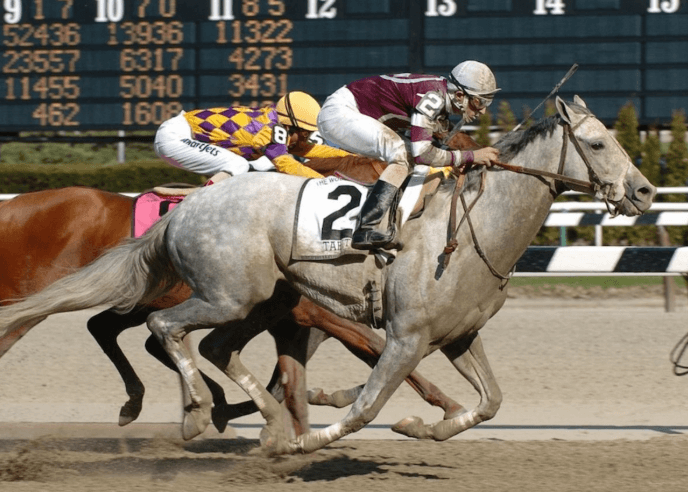Horse racing has always been seen as a thrilling spectacle of speed, power, and strategy. But beneath the glamour of the racetrack lies a fascinating world of science. Equine performance isn’t just about breeding fast horses — it’s about biology, biomechanics, physiology, nutrition, and training working together to produce champions.
In this article, we’ll explore the science behind horse racing and break down what truly makes a horse a top performer.
1. Anatomy of Speed: How Horses Are Built to Run
Horses are natural-born runners, but racing breeds like Thoroughbreds and Quarter Horses are especially designed for speed.
Key Physical Features:
- Large Heart and Lungs: Elite racehorses like Secretariat had hearts nearly three times the average size. This allows more oxygen-rich blood to pump through muscles.
- Powerful Muscles: Horses have a high ratio of fast-twitch muscle fibers, perfect for explosive speed and acceleration.
- Long Strides: A Thoroughbred can cover up to 25 feet in a single stride, with stride frequency averaging 130–140 strides per minute.
- Efficient Limbs: Horses have evolved with long legs and lightweight skeletons that maximize stride length without adding unnecessary weight.
2. The Role of Genetics in Equine Performance
Breeding plays a massive role in producing racehorses. Scientists and breeders focus on genetics to ensure foals inherit traits of speed and stamina.
- Selective Breeding: Horses with proven bloodlines (e.g., descendants of Northern Dancer or Mr. Prospector) are more likely to pass on winning traits.
- Speed Gene (Myostatin): Research has identified variations in the MSTN gene, which influence whether a horse excels in sprinting (short races) or endurance (longer distances).
- Inbreeding and Outcrossing: Breeders carefully balance bloodlines to avoid genetic weaknesses while enhancing desirable traits.
3. Biomechanics: The Physics of Running
Horse racing is as much about motion mechanics as raw power.
- Stride Efficiency: Winning horses combine long stride length with high stride frequency. Secretariat’s famous stride efficiency remains unmatched.
- Suspension Phase: During galloping, horses spend part of each stride completely airborne. This “flying phase” contributes to higher speeds.
- Balance and Gait: Horses maintain balance through precise coordination of muscles and skeletal movement. Even minor inefficiencies can slow them down.
See also: Horse Racing Breeds: Which Horses Are Built for Speed?
4. Physiology: How the Body Fuels Performance
Like human athletes, horses rely on energy systems to sustain performance.
- Aerobic Capacity: During longer races, horses rely on oxygen to convert fat and glycogen into energy.
- Anaerobic Power: In short sprints, oxygen is insufficient, so muscles burn glycogen rapidly, producing lactic acid.
- VO₂ Max: Elite horses have a VO₂ max (maximum oxygen uptake) of up to 180 ml/kg/min, nearly twice that of elite human athletes.
- Recovery: A horse’s ability to clear lactic acid and regulate heart rate after exertion determines how well it can train and race again.
5. The Role of Nutrition in Racehorse Performance
Feeding a racehorse is a precise science, balancing energy, recovery, and health.
- High-Energy Diet: Typically based on oats, grains, and specially formulated feeds to provide quick-burning carbohydrates.
- Proteins: Essential for muscle repair and recovery.
- Fats: Provide a slow-release energy source for endurance races.
- Supplements: Electrolytes, vitamins, and minerals support hydration and metabolic processes.
Even small dietary imbalances can impact performance or increase injury risk.
6. Training Science: Conditioning for the Track
A horse’s potential can only be realized through careful conditioning.
- Interval Training: Short bursts of high intensity followed by rest improve both aerobic and anaerobic capacity.
- Gallops and Breezes: Controlled gallops build stamina, while breezes (short, fast runs) sharpen speed.
- Rest and Recovery: Muscles need downtime to rebuild and strengthen. Overtraining can lead to fatigue and injuries.
- Psychological Training: Horses, like humans, need mental preparation — exposure to crowds, gates, and noise ensures they stay focused during race day.
7. Technology in Modern Horse Racing
Science has advanced beyond traditional training, with technology now enhancing performance and safety.
- Heart Rate Monitors: Track a horse’s exertion levels during workouts.
- GPS and Motion Sensors: Measure stride length, stride frequency, and acceleration.
- Genetic Testing: Identifies whether a horse is better suited for sprint or distance races.
- Veterinary Advances: Imaging tools detect micro-injuries before they become career-ending.
8. Injury Prevention and Health Science
Racing pushes horses to their physical limits, so injury prevention is a top priority.
- Bone Remodeling: Training strengthens bones, but too much stress too soon increases fracture risk.
- Tendon & Ligament Care: Conditioning and careful monitoring prevent common tendon injuries.
- Surface Science: Tracks are engineered (dirt, turf, synthetic) to balance speed with reduced injury risk.
9. The Mental Side of Racing
Horses are not machines — their mindset matters.
- Temperament: Calm yet competitive horses tend to perform better under pressure.
- Bond with Jockey: Communication between horse and rider can make the difference in a close finish.
- Adaptability: Some horses excel in crowded races, while others perform best when running freely at the front.
Conclusion
The science behind horse racing proves that champions are made through a combination of biology, genetics, physiology, training, nutrition, and technology. From the powerful heart of Secretariat to the precision of modern sports science, equine performance is the perfect blend of nature and nurture.
Every time a horse thunders down the track, it isn’t just muscle and speed at work — it’s centuries of breeding, years of training, and the wonders of equine biology coming together in the ultimate test of performance.
